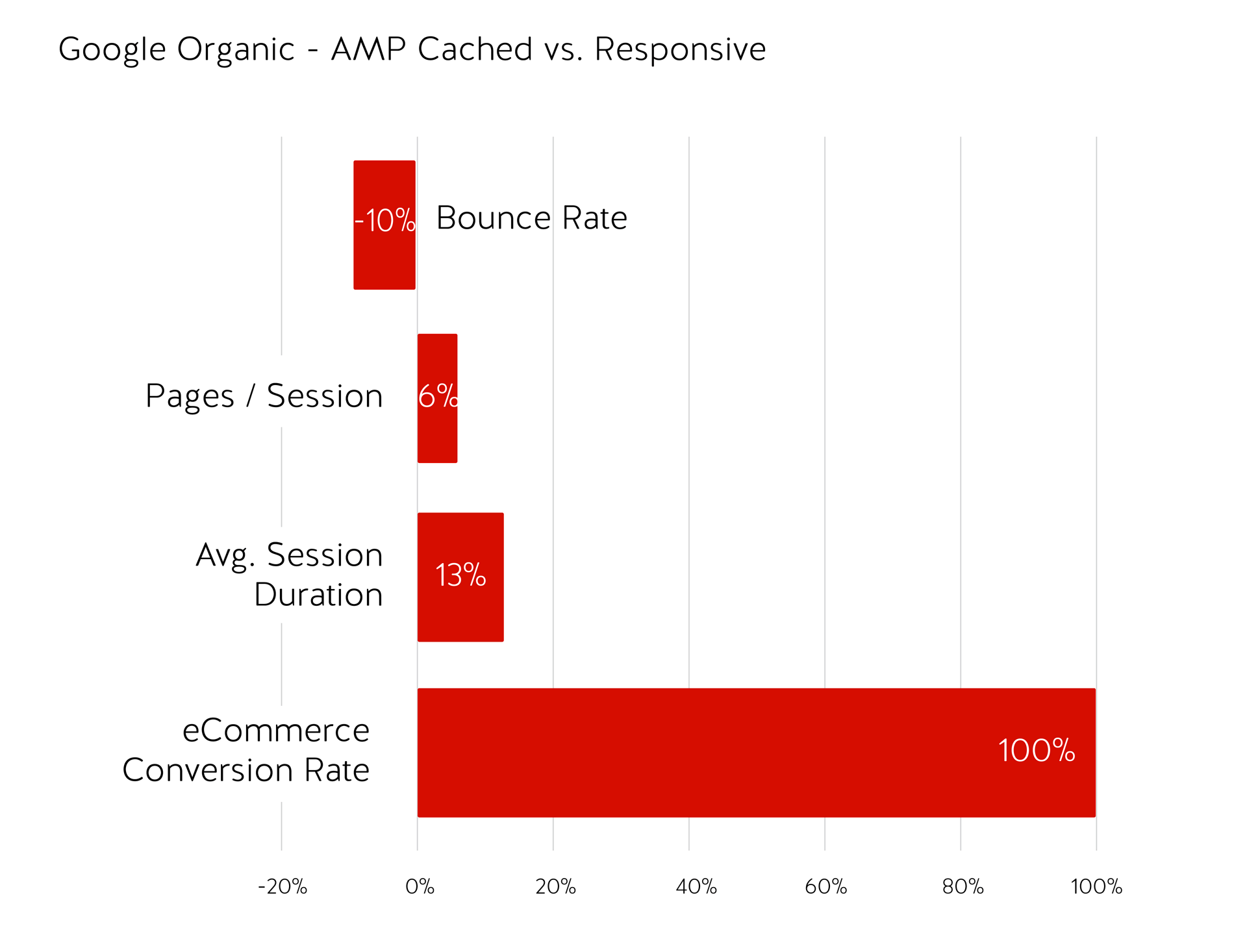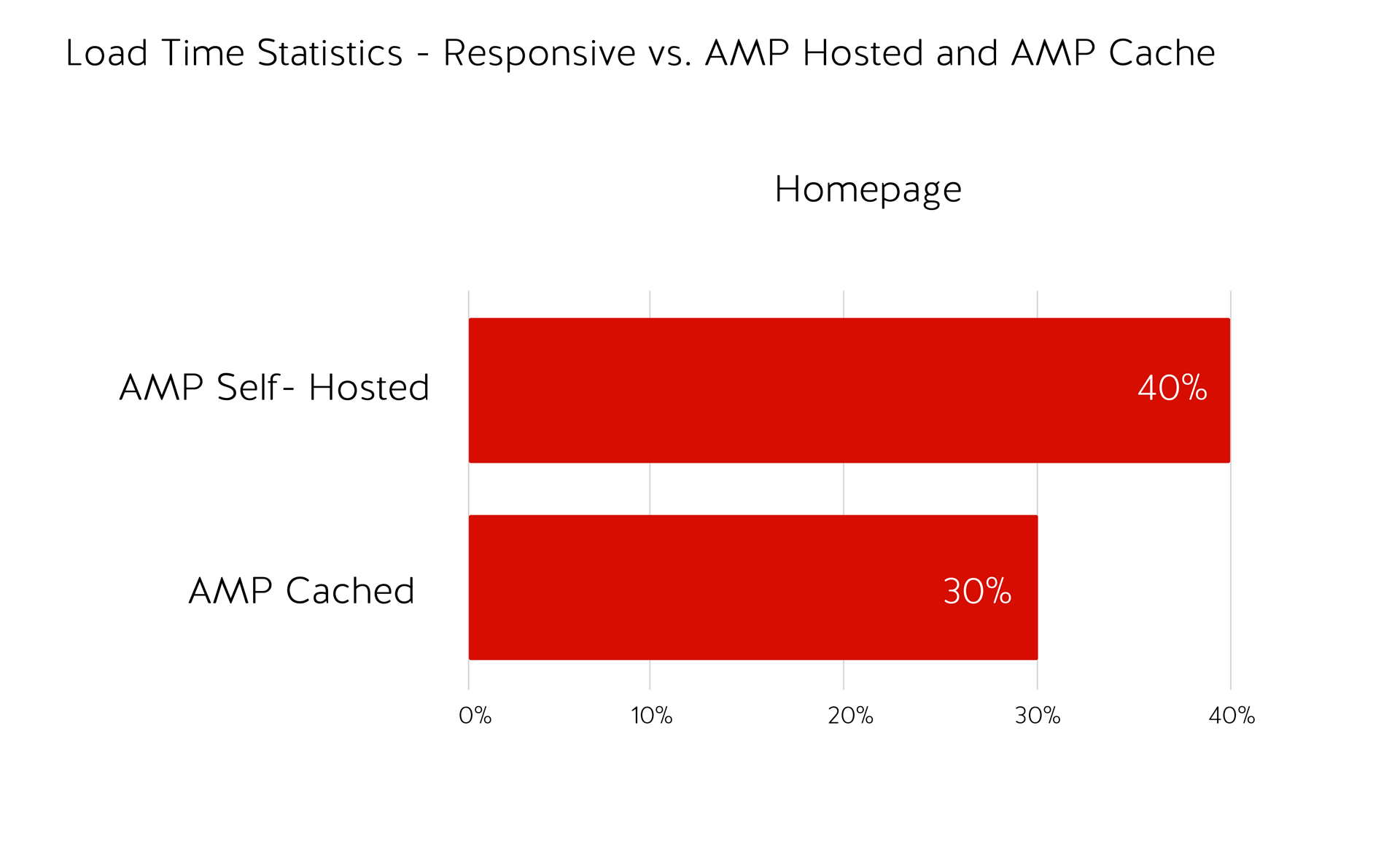Event Tickets Center
An AMP Case Study

Site Background
Event Tickets Center (ETC) is the one of the largest event ticket resale marketplaces. The company provides a secure and convenient place to buy tickets for national and local events, including concerts, professional sporting events, Broadway shows and other live events.
ETC was looking for an immersive experience, and the target was to improve conversions in the PPC environment. They were initially apprehensive about doing it until it came out into the mainstream. Very few people were doing it at the time. Initial implementation took place during the Summer 2016. It was extremely difficult due to limited support/documentation. They developed roundabout hacks to get it to work.
Implementation
ETC did a custom implementation of AMP. More than 20,000 pages were converted to AMP, which represents 99.9% of the site. The only pages that were not converted were a handful of JavaScript-dependent pages. Initially it did not work well for them. At the time, the tracking was not good, and it was still not fully there until very recently.
ETC started testing AMP for PPC. They basically put it together with spit and duct tape. Because of the problems with analytics, they couldn't get great data on how it was performing, but they felt good about what was happening. They created their own analytics hack to address the tracking problems, and this helped them better understand AMP performance.
Nonetheless, the system was having issues, and they were on the verge of abandoning the AMP experiment. But then they were called by the AMP team at Google to participate in a case study, and they decided to give it another shot.
As a result, they converted all their mobile PPC advertising campaigns to send traffic to AMP pages. This was implemented on 17,000 landing pages, so all their mobile advertising would go to those pages. Now that analytics were better tied in, they found that it was performing through the roof.
In a case study published on Search Engine Land, Adam Young of ETC shared:
“They were now able to keep users in the AMP experience through navigation, search and their events pages. It is a full AMP experience until users reach the interactive seating chart and checkout. A few months in, more than 70% of the 100,000 ad groups in their mobile AdWords campaigns pointed only to AMP pages. That’s now at 100 percent.”
About the same time (mid-May), they implemented an AMP seating chart/maps, and ticket listing pages that were super fast. At the time of our interview with ETC, AMP-bind had not yet been implemented, as it was still in experimental mode.
AMP Metrics
ETC did not see any ranking increases with AMP. Three-quarters of the site is traffic and a majority of sales come from mobile. Conversions are via end user purchase. These are tracked by GA 360/and a custom tracking system. AMP pages load in just over a second, and they used to take 5 to 6 seconds.
Some further points from the Search Engine Land article (June 2017):
“In A/B testing the AMP experience versus the responsive experience with AdWords traffic, the team saw a 20 to 30 percent conversion lift on AMP pages across all mobile campaigns. AMP pages from organic traffic are converting at a 100 percent lift over responsive, says Adam Young, and the bounce rate is 10 points lower.”
Overall, ETC has seen a 25 to 30 percent reduction in bounce rate.
In our August 2017 interview, Jesse Young of ETC shared this additional data:
Google Organic (AMP Cached vs. Responsive):
- Bounce Rate ~10% improvement
- Pages/Session ~6% improvement
- Avg. Session Duration ~13% improvement
- eCommerce Conversion Rate ~100% improvement
Net-net, Event Tickets Center is doing more Google organic sales via AMP pages than responsive pages.
ETC also measured the conversion rate of their AMP self-hosted pages vs. their responsive landing pages for their PPC campaigns, and they saw a 25-30% conversion rate lift for the AMP self-hosted landing pages. As result, they now rub AMP self-hosted landing pages exclusively across their 30k+ mobile-only advertising groups.
The benefits have been large enough that ETC has built a nearly fully immersed AMP experience on their site which spans 17k+ pages. In other words, the user stays on AMP-validated pages throughout site navigation. Their feeling is that just building AMP landing pages is a cop-out and not accomplishing the user experience goals. Customers do not convert on their site on Landing Pages. All pages on the site are AMP and keep you in AMP until the customer reaches their deep funnel complex interactive seating chart and checkout pages.
Implementation Issues
The analytics session stitching issue was a big problem. Among other things, it was driving up reported bounce rates.
For their site, dynamic content is still a problem. Ticket feeds change several times a day. ETC wants to know how often the AMP cache is updated. This is an issue for them because ticket inventory changes very dynamically (almost constantly).
The site is immersive AMP up to a certain point in the funnel, but the one shortfall is that they don't have a solution to keep users in AMP by the time they get into the shopping cart. They are developing a solution, possibly using the Google payments API, but that is limited to Android at the moment.
ETC views this as a drastic turn in how you look at web sites. You can't have every possible widget and toy, but it's not as drastic as going back to basic HTML circa 1996. In the end, this makes sense because on a mobile device, people don't want every widget. Give them big text, big buttons, and give it to them fast.
They have considered AMP only (i.e., for both desktop and mobile). AMP is getting close to having everything you need to do something like that.
ROI
The Event Tickets Center team shared their thoughts on this with these two words: “Big win.”

